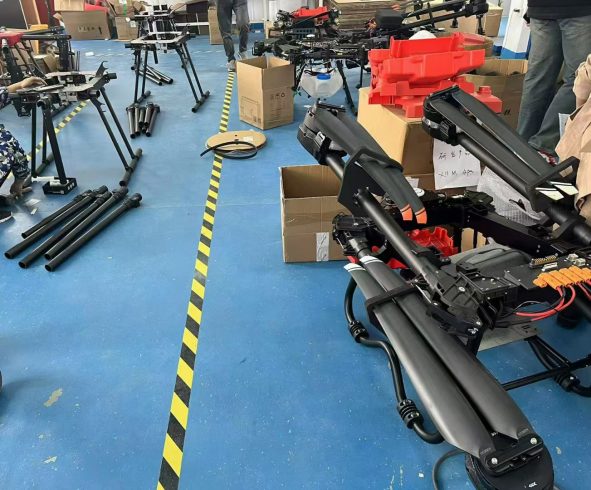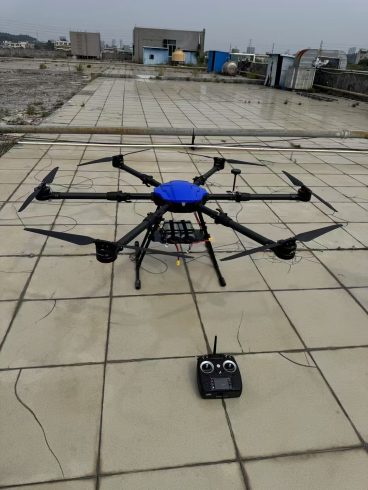![图片[1]-Best Drones for Crop Spraying in 2025: Precision, Power, and Performance-msoen](https://www.msoen.com/wp-content/uploads/2025/04/164e113f97214114-576x1024.jpg)
As the demand for sustainable and efficient farming practices grows, crop-spraying drones have become indispensable tools for modern agriculture. These advanced machines enable farmers to apply pesticides, herbicides, and fertilizers with unmatched accuracy, reducing waste and labor costs. In this guide, we explore the top drones for crop spraying, their key features, and how to choose the right model for your farm.
Why Use Drones for Crop Spraying?
Drones revolutionize traditional spraying methods by offering:
- Precision: Target specific areas to reduce chemical use by 40–70%.
- Speed: Cover 10–20 acres per hour, 10x faster than manual spraying.
- Safety: Minimize human exposure to harmful chemicals.
- Cost Savings: Cut labor and fuel expenses by up to 60%.
Key Features to Look for in Crop-Spraying Drones
- Payload Capacity
- 5–10L: Ideal for small farms or specialty crops.
- 15–25L: Suitable for large-scale row crops like corn or wheat.
- Battery Life & Swappability
- Aim for 20–30 minutes of flight time with quick-swap batteries.
- Spraying Accuracy
- Look for ultrasonic nozzles, variable flow control, and AI-powered droplet sizing.
- Durability
- IP67 waterproofing and dustproof motors for harsh field conditions.
- Software Integration
- Compatibility with farm management platforms for data-driven decisions.
Top Drones for Crop Spraying in 2024
- High-Capacity Powerhouse
- Best For: Large farms (500+ acres).
- Features:
- 20L tank capacity for extended operations.
- RTK-GPS with centimeter-level accuracy.
- AI-powered obstacle avoidance for orchards or uneven terrain.
- Benefits: Reduces spraying costs by $50/acre while achieving 98% coverage efficiency.
- Compact All-Rounder
- Best For: Mid-sized farms and specialty crops.
- Features:
- 10L modular tank (switch between liquid and granular spraying).
- Multispectral sensors for real-time crop health analysis.
- 25-minute flight time with 4K live streaming.
- Benefits: Ideal for vineyards, orchards, or organic farms requiring precision.
- Budget-Friendly Starter
- Best For: Smallholders and trial plots.
- Features:
- 5L tank with manual refill system.
- Basic GPS waypoint navigation.
- Lightweight design (under 10kg).
- Benefits: Affordable entry into drone spraying, saving 30% on chemical costs.
- Autonomous Swarm Leader
- Best For: Industrial-scale operations.
- Features:
- Swarm intelligence to coordinate 10+ drones simultaneously.
- 30L payload capacity and solar-charging compatibility.
- Blockchain-enabled spray logs for organic certification.
- Benefits: Covers 1,000 acres/day with 95% less labor.
How to Choose the Right Drone
- Assess Your Farm Size & Crop Type
- Row crops (e.g., corn, soybeans) require high-capacity drones.
- Orchards or vineyards need compact models with obstacle avoidance.
- Calculate ROI
- Use the formula:
Annual Savings = (Chemical Savings/Acre + Labor Savings/Acre) × Total Acres - Most farmers break even within 12–18 months.
- Check Local Regulations
- Ensure compliance with FAA (U.S.), EASA (EU), or local drone laws.
- Prioritize After-Sales Support
- Opt for vendors offering training, warranties, and repair services.
Case Study: Transforming a Midwest Soybean Farm
- Challenge: Rising herbicide costs and resistant weeds.
- Solution: A 20L drone with AI-targeted spraying.
- Results:
- 55% less herbicide used.
- $32,000 saved annually.
- 15% yield increase due to healthier crops.
Future Trends in Crop-Spraying Drones
- 5G Connectivity: Real-time collaboration with IoT soil sensors.
- Green Energy: Hydrogen fuel cells for zero-emission operations.
- Nano-Drones: Ultra-precise spraying for greenhouse vertical farms.
Conclusion: Elevate Your Farm with the Right Drone
Investing in a crop-spraying drone isn’t just about adopting technology—it’s about securing a competitive edge. Whether you’re a small organic grower or a large-scale agribusiness, the right drone can slash costs, boost yields, and protect the environment.











暂无评论内容